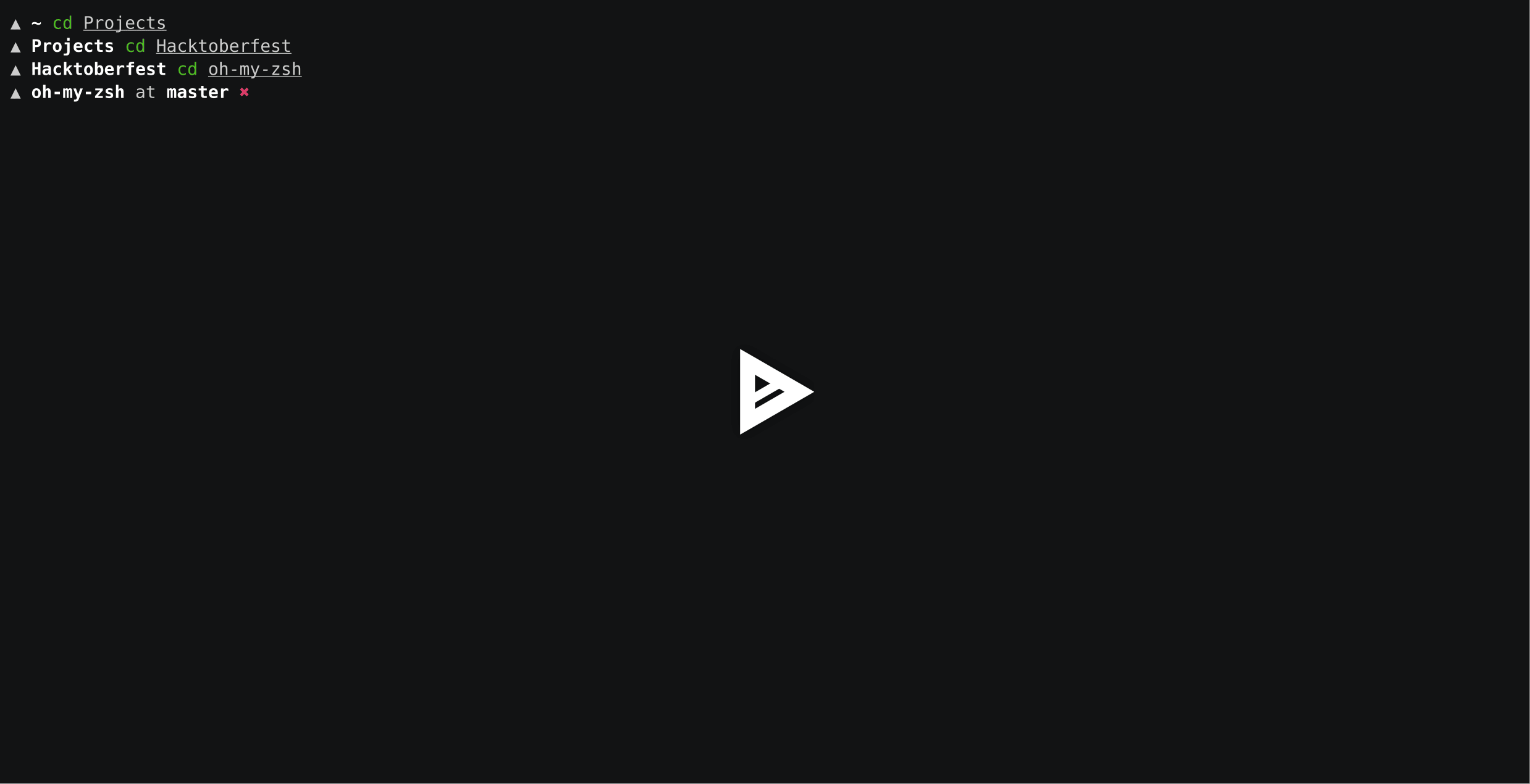mirror of https://github.com/ohmyzsh/ohmyzsh.git
83 lines
4.0 KiB
Markdown
83 lines
4.0 KiB
Markdown
# dircycle
|
|
|
|
Plugin for cycling through the directory stack
|
|
|
|
This plugin enables directory navigation similar to using back and forward on browsers or common file explorers like Finder or Nautilus. It uses a small zle trick that lets you cycle through your directory stack left or right using <kbd>Ctrl</kbd> + <kbd>Shift</kbd> + <kbd>Left</kbd> / <kbd>Right</kbd> . This is useful when moving back and forth between directories in development environments, and can be thought of as kind of a nondestructive pushd/popd.
|
|
|
|
## Enabling the plugin
|
|
|
|
1. Open your `.zshrc` file and add `dircycle` in the plugins section:
|
|
|
|
```zsh
|
|
plugins=(
|
|
# all your enabled plugins
|
|
dircycle
|
|
)
|
|
```
|
|
|
|
2. Restart the shell or restart your Terminal session:
|
|
|
|
```console
|
|
$ exec zsh
|
|
$
|
|
```
|
|
|
|
## Usage Examples
|
|
|
|
Say you opened these directories on the terminal:
|
|
|
|
```console
|
|
~$ cd Projects
|
|
~/Projects$ cd Hacktoberfest
|
|
~/Projects/Hacktoberfest$ cd oh-my-zsh
|
|
~/Projects/Hacktoberfest/oh-my-zsh$ dirs -v
|
|
0 ~/Projects/Hacktoberfest/oh-my-zsh
|
|
1 ~/Projects/Hacktoberfest
|
|
2 ~/Projects
|
|
3 ~
|
|
```
|
|
|
|
By pressing <kbd>Ctrl</kbd> + <kbd>Shift</kbd> + <kbd>Left</kbd>, the current working directory or `$PWD` will be from `oh-my-zsh` to `Hacktoberfest`. Press it again and it will be at `Projects`.
|
|
|
|
And by pressing <kbd>Ctrl</kbd> + <kbd>Shift</kbd> + <kbd>Right</kbd>, the `$PWD` will be from `Projects` to `Hacktoberfest`. Press it again and it will be at `oh-my-zsh`.
|
|
|
|
Here's a example history table with the same accessed directories like above:
|
|
|
|
| Current `$PWD` | Key press | New `$PWD` |
|
|
| --------------- | ----------------------------------------------------- | --------------- |
|
|
| `oh-my-zsh` | <kbd>Ctrl</kbd> + <kbd>Shift</kbd> + <kbd>Left</kbd> | `Hacktoberfest` |
|
|
| `Hacktoberfest` | <kbd>Ctrl</kbd> + <kbd>Shift</kbd> + <kbd>Left</kbd> | `Projects` |
|
|
| `Projects` | <kbd>Ctrl</kbd> + <kbd>Shift</kbd> + <kbd>Left</kbd> | `~` |
|
|
| `~` | <kbd>Ctrl</kbd> + <kbd>Shift</kbd> + <kbd>Right</kbd> | `Projects` |
|
|
| `Projects` | <kbd>Ctrl</kbd> + <kbd>Shift</kbd> + <kbd>Right</kbd> | `Hacktoberfest` |
|
|
| `Hacktoberfest` | <kbd>Ctrl</kbd> + <kbd>Shift</kbd> + <kbd>Right</kbd> | `oh-my-zsh` |
|
|
| `oh-my-zsh` | <kbd>Ctrl</kbd> + <kbd>Shift</kbd> + <kbd>Right</kbd> | `~` |
|
|
|
|
Note the last traversal, when pressing <kbd>Ctrl</kbd> + <kbd>Shift</kbd> + <kbd>Right</kbd> on a last known `$PWD`, it will change back to the first known `$PWD`, which in the example is `~`.
|
|
|
|
Here's an asciinema cast demonstrating the example above:
|
|
|
|
[](https://asciinema.org/a/204406)
|
|
|
|
## Functions
|
|
|
|
| Function | Description |
|
|
| -------------------- | ------------------------------------------------------------------------------------------------------------------- |
|
|
| `insert-cycledleft` | Change `$PWD` to the previous known stack, bound to <kbd>Ctrl</kbd> + <kbd>Shift</kbd> + <kbd>Left</kbd> |
|
|
| `insert-cycledright` | Change `$PWD` to the next known stack, bound to <kbd>Ctrl</kbd> + <kbd>Shift</kbd> + <kbd>Right</kbd> |
|
|
| `insert-cycledup` | Change `$PWD` to the parent folder, bound to <kbd>Ctrl</kbd> + <kbd>Shift</kbd> + <kbd>Up</kbd> |
|
|
| `insert-cycleddown` | Change `$PWD` to the first alphabetical child folder, bound to <kbd>Ctrl</kbd> + <kbd>Shift</kbd> + <kbd>Down</kbd> |
|
|
|
|
## Rebinding keys
|
|
|
|
You can bind these functions to other key sequences, as long as you know the bindkey sequence. For example, these commands bind to <kbd>Alt</kbd> + <kbd>Shift</kbd> + <kbd>key</kbd> in `xterm-256color`:
|
|
|
|
```zsh
|
|
bindkey '^[[1;4D' insert-cycledleft
|
|
bindkey '^[[1;4C' insert-cycledright
|
|
bindkey "\e[1;4A" insert-cycledup
|
|
bindkey "\e[1;4B" insert-cycleddown
|
|
```
|
|
|
|
You can get the bindkey sequence by pressing <kbd>Ctrl</kbd> + <kbd>V</kbd>, then pressing the keyboard shortcut you want to use.
|